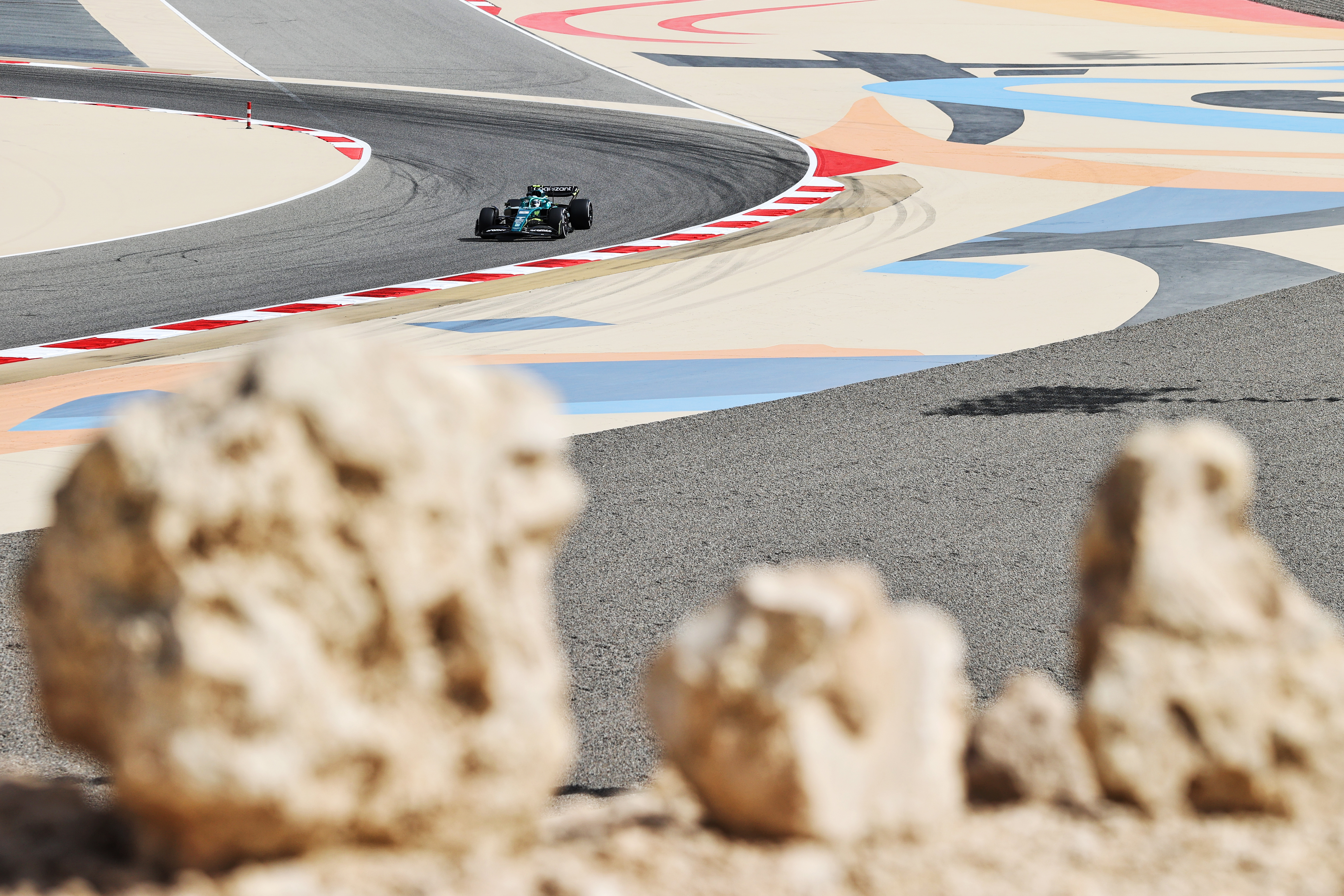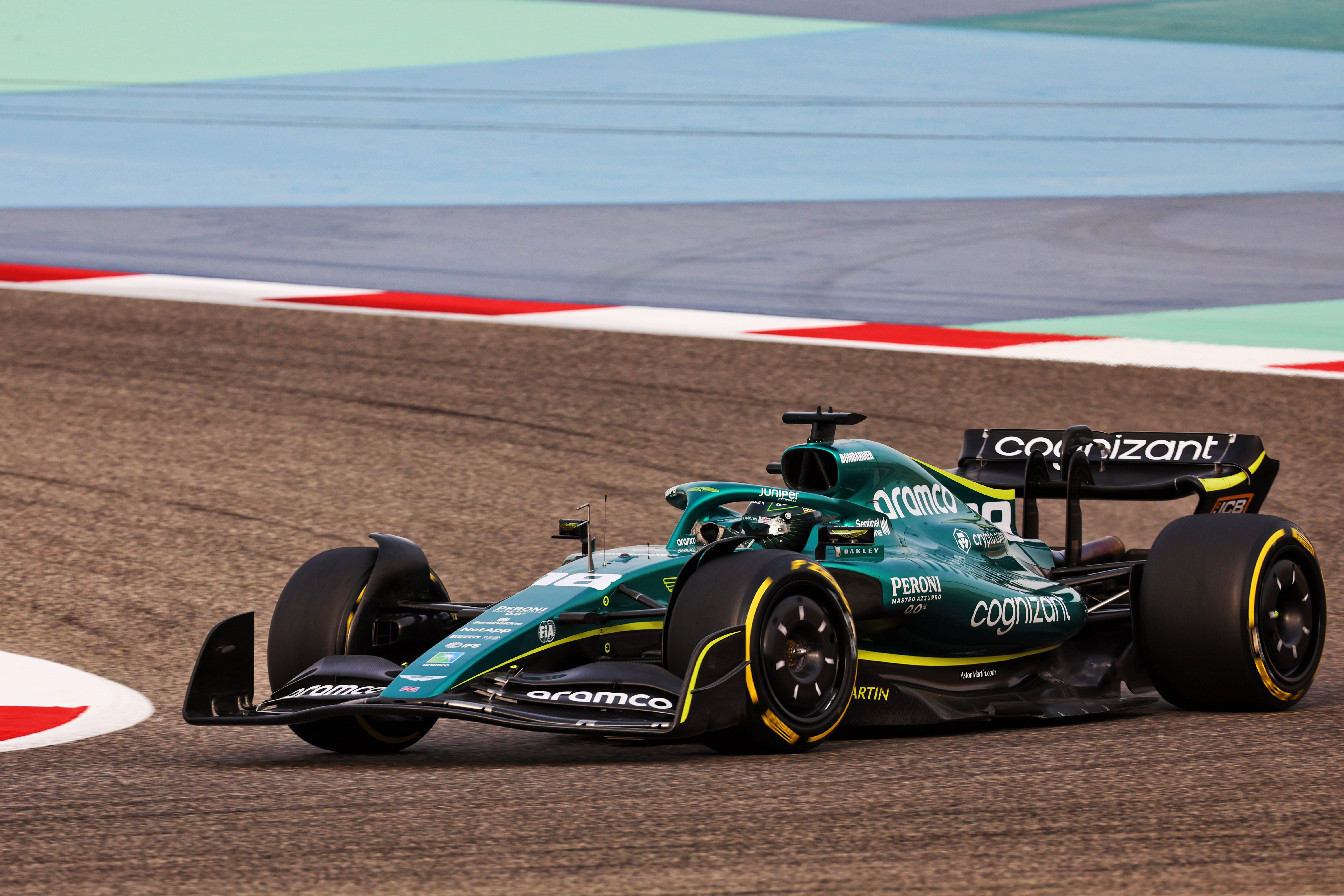A team’s performance in testing versus performance in the season itself depends on margin. How much did it have left to improve, and how much did the other teams?
Quickly checking the lap times from the second test in Bahrain leads to an easy assumption about Aston Martin: unless it is holding back an awful lot, it might be in trouble. Sebastian Vettel set the team’s fastest lap, which was 2.1 seconds slower than Red Bull driver Max Verstappen’s overall best. It left Aston Martin ninth of the 10 teams.
Aston Martin’s test was certainly low key, probably the most of any team’s. But it was productive, free of major disruptions in Bahrain, and the emphasis was not on “irrelevant” lap times – to borrow Vettel’s phrase – but on understanding the AMR22 as much as possible.
This is true for almost every team to a greater or lesser extent although ‘Team Silverstone’ has always been a modest force in testing. For years it has ended pre-season testing in a lower position on the times than it has gone on to occupy when it matters.
So what was it up to this year?
“It’s been the toughest six days of testing I’ve ever been involved with,” says Aston Martin performance director Tom McCullough.

“Just from having to be understanding what you’re doing and react into it and trying to still get all the main test items done.
“You’ve got to map and understand the car, you’ve got to try to get the maximum performance out the car, we don’t want the porpoising, but also long runs, high-fuel runs, tyre degradation.
“Barcelona’s obviously very cold, Bahrain is very hot and quite unique, rough Tarmac.
“So trying to just understand and factor all that in, we’re also doing some testing, looking ahead to Jeddah, and some other races.
“I’m quite happy that we’ve got through all the main test items that we wanted to get through and the car’s reacting and behaving as we think it should be doing.”
Aston Martin was not “explicitly focusing on massive miles because the learning of all the test items is actually more important to us” but it did complete a respectable number of laps in Bahrain with 339, the fifth-highest tally.
This is a pretty big departure from the team’s 2021 preparation. You might recall that in Bahrain 12 months ago, Vettel’s first season with the team started with significant setbacks. Aston Martin had one of the worst tests and was on the back foot going into the new season.
It’s different this time, and Aston Martin will be relieved that it is. There was an awful lot of work to complete for all 10 teams in pre-season thanks to the brand new cars and their exhausting list of associated challenges. But it’s not just the new cars that made testing tricky.
The temperature and wind in Bahrain meant conditions changed hour-to-hour and in such circumstances McCullough says it is easy to get “lost”. This can quickly become the dominant force and complicate the understanding of what is a car characteristic and what is an external variable.
“At times, the headwinds, tailwinds are changing day to day, 25-30km/h winds,” he says.

“So, going into Turn 1 with a lovely big headwind, everyone likes that, but going through Turns 6, 7, 8 and into Turn 11, with a huge tailwind, nobody likes that.
“Turn 13 is a really interesting corner in Bahrain, because you often a bit like Turn 4 can get a 180-degree switch in wind through-corner. So you’re having a headwind going to no wind going to a huge tailwind through corner and the grip-limited phase.
“You try to not get lost with understanding all the work you’re doing on the car. Because the drivers, we’re always telling them about the wind, they understand the influence of the wind, but when you’re trying to do set-up tests whether it’s a camber test on tyres, whether it’s aerodynamic component tests, whether it’s any set-up tests, those factors [the conditions] are nearly dominating the characteristics of the car.
“So you have to be very data driven with what’s happening with the wind, what the tyres are doing.
“Now there’s a lot of analysis going on this week, carrying on the post processing of all that data, just trying to make sure that we can, with the given car we’ve got, we’re just trying to make it go as fast as we can.
“And that’s the job, whether it’s aero, tyres, balance, just making sure we have a good understanding of that.”
Aston Martin has a helping hand in that data interpretation now. Its title partner Cognizant lends a powerful element, data science, to an already data-heavy process. As it is one of the company’s specialties it affords Aston Martin a significant amount of resource, experience and understanding it would otherwise be lacking.

Turning to specific on-track challenges with the 2022 F1 cars, though, and one obvious one is the porpoising issue that has struck several teams.
Porpoising occurs when the car gets sucked so close to the ground by the powerful underfloor aero that the diffuser stalls, leading to the rear end rising as the load is reduced then dropping again as the load builds up again.
Aston Martin did not seem to struggle with that so much in Bahrain, although it remains to be seen if that’s because its ways of addressing the problem have compromised its laptime.
“We did some tests that could initiate it,” says McCullough.
“And it’s all about balance between still wanting to maximise performance but you’re also not wanting the porpoising – it’s not good for reliability, it’s not good for lots of things.
“So it’s that balance between retaining performance and reducing porpoising which is the balance that everyone’s playing with up and down the pitlane.”

Aston Martin will have the best idea of where it sits after this test having likely held back more than others. This is not a matter of sandbagging so much as the differences between programmes. Each team has its own methods and Aston Martin’s have not featured the same emphasis on performance running, or at least not in the same way.
For instance, while several other teams were completing late qualifying simulations on the final evening – Red Bull, Alpine, Alfa Romeo and AlphaTauri – Vettel was not using anything softer than a C3 (which is the soft tyre this weekend in Abu Dhabi).

There were some clues in Aston Martin’s performance, though. Vettel did a good long stint on Saturday that was superior to its midfield rivals, including the eye-catchingly quick (on low fuel) Haas. And he cut a reasonably satisfied figure on Saturday evening.
“It’s not so bad, it’s difficult – the cars are different to drive, mostly because they’re so heavy,” Vettel says.
“So you feel the mass, and they feel a bit lazy. Speaking to others, everybody’s having the same sensation.
“We had lots of stuff to go through. Like a lot of people, we’re fighting the porpoising down the straights.
“We will see where we are, where we are next next week but it seems like that’s a big group with a lot of teams. And we seem to be somewhere in there.
“Hopefully, at the front, that could make a big difference!”
The team’s headline laptimes don’t indicate that is likely but given its testing history it would be unwise to read too much into that.





